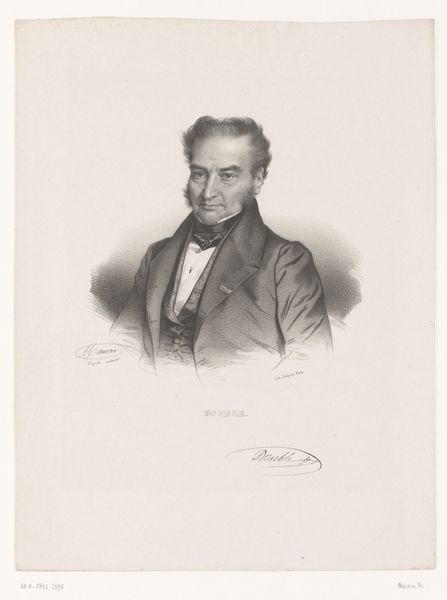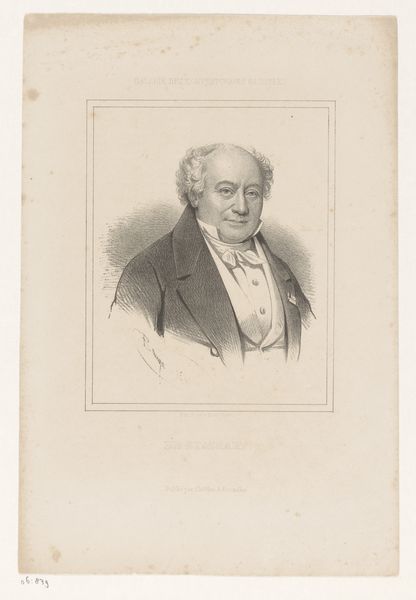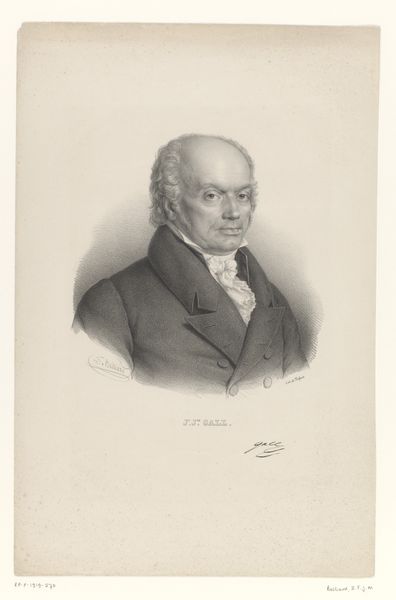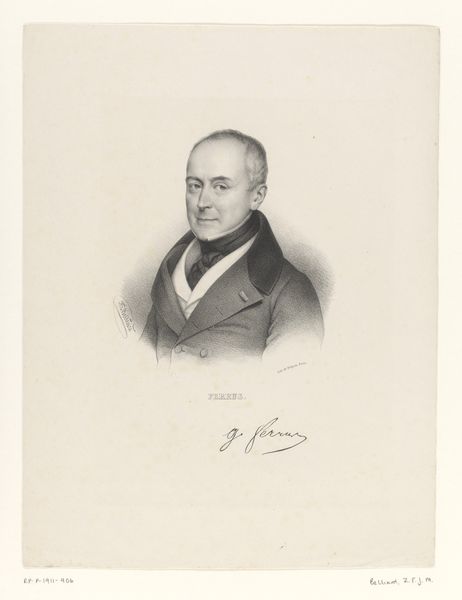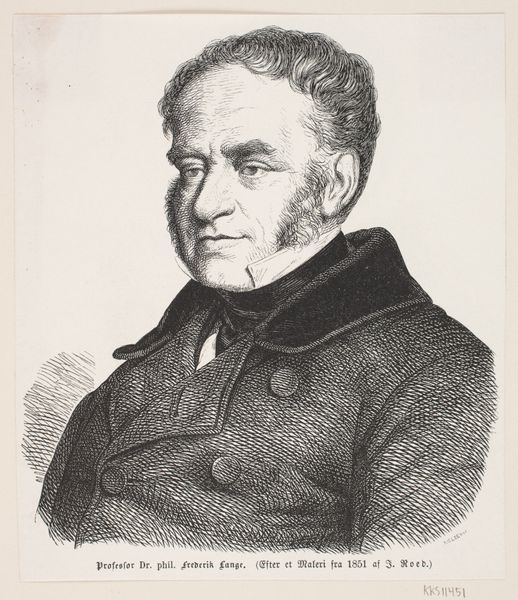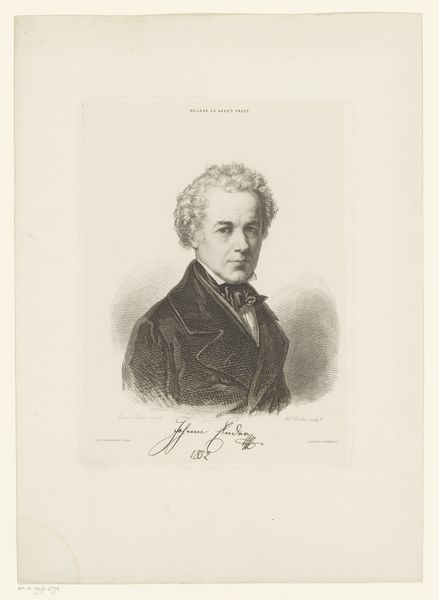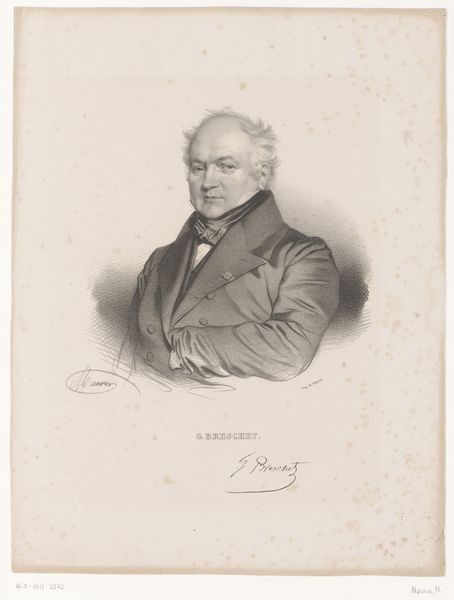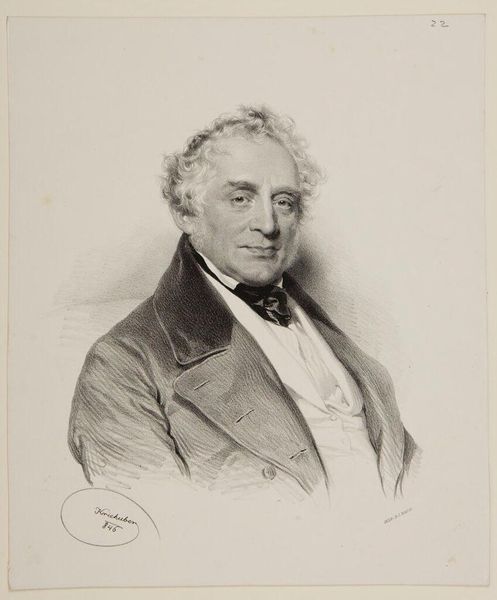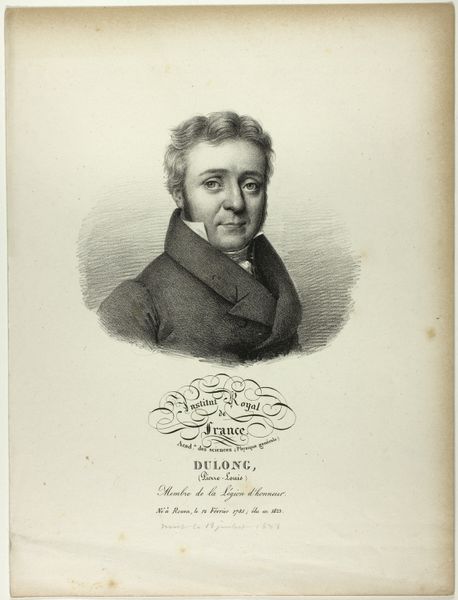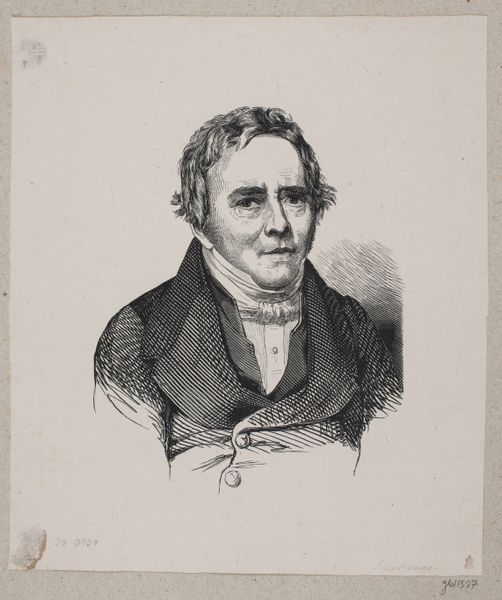
lithograph, print
#
portrait
#
lithograph
# print
#
genre-painting
#
realism
Dimensions: 279 mm (height) x 132 mm (width) (bladmaal)
Curator: What a stern-looking gentleman! There's a certain intensity in his gaze. Editor: Indeed. Let’s delve into this intriguing portrait. This lithograph, created in 1857, depicts P.C. Schierbeck. The lithographic process, using a stone or metal plate, allows for the detailed replication we see here. Curator: Thinking about that reproduction – this would have been a way to circulate his image, to make it accessible to a broader public, wouldn't it? What purpose would the distribution of these types of portraits have had for the portrayed? Editor: Precisely. Portraits like these, especially when reproduced through printmaking techniques like lithography, played a significant role in shaping public perception and solidifying the subject's social standing. It allowed for broader dissemination and commodification of a likeness. The man himself becomes something to be circulated, displayed, or owned by ordinary citizens. Curator: The crispness achieved through the lithographic process almost belies its handmade origins. I'm curious about who would have been commissioning, consuming, or creating this. Editor: I imagine a wide audience, ranging from fellow academics to those seeking a token of admiration for the sitter. Lithography provided a relatively affordable method to circulate imagery. What about the artist themselves, I wonder what were the studio's social standing and relationships like with the Schierbeck portrayed. Were these images only circulated within exclusive circles or actively marketed to the broader population? Curator: This portrait also reminds us of the socio-political context in which it was produced. Who had the means and access to representation, to having their likeness preserved and circulated? It raises important questions about the power dynamics inherent in portraiture and its role in reinforcing existing social hierarchies. Editor: Absolutely. The availability and accessibility of such portraits reinforced class divisions, contributing to a visual culture that perpetuated social inequalities. This reminds me of those debates around photography at the time. As photography became popular, portraiture lost its elite function and slowly became a new, democratic technology. Curator: Reflecting on the work's creation, distribution and the hierarchies present in society it allows a comprehensive understanding, even with just one image. Editor: A perfect point on which to conclude. By examining both the physical attributes and socio-political environment that birthed it, we reveal this piece for the historical capsule that it is.
Comments
No comments
Be the first to comment and join the conversation on the ultimate creative platform.
